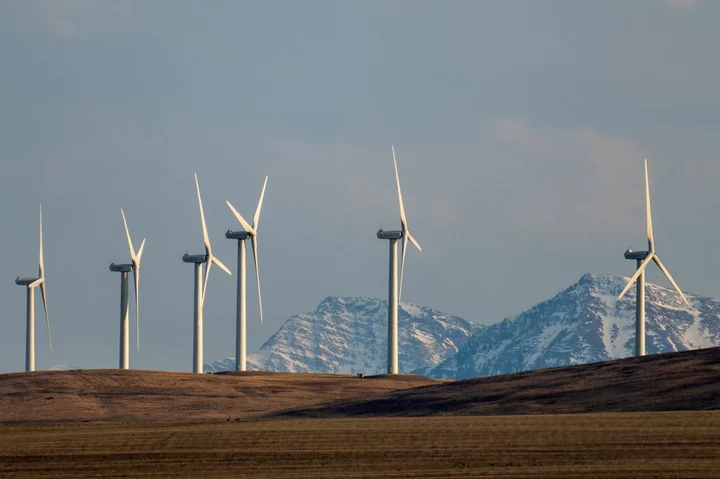Canada is set for massive growth in wind power generation as it moves toward net zero emissions by 2050, a new report by the country’s energy regulator suggested.
The report models how energy consumption is expected to change under various scenarios as the world reduces its carbon emissions, and it projects electricity use will more than double in Canada from now until mid-century.
“Among all technologies, wind contributes the greatest amount of new generation by 2050, increasing ninefold from current levels,” the Canada Energy Regulator said, using a scenario it calls “global net zero” that assumes the world acts quickly enough to limit global warming to 1.5 degrees Celsius by 2050.
The regulator’s model sees the greatest amount of new wind power being built in the provinces of Alberta, Saskatchewan, British Columbia and Ontario.
Natural Resources Minister Jonathan Wilkinson said he wasn’t surprised to see the emphasis on wind generation, given how much it’s come down in cost. Building it out quickly will be a challenge, he acknowledged, but he sees it as achievable — despite the controversy that large-scale wind projects often prompt in neighboring communities.
“Some of this will also come from offshore wind, which perhaps in terms of public acceptance is easier, because it’s a long way offshore,” he said by phone Tuesday. “Those are often very large facilities, and Canada has been a little bit slower on the offshore than our European counterparts.”
Solar power will grow at a much slower pace than wind power, the report projects, eventually making up 5% of generation by 2050.
Hydroelectricity increases by 26% in the modeling, though largely confined to provinces that already have significant hydro projects. Natural gas abated by carbon capture would become a key source of power in Alberta and Saskatchewan, eventually representing 13% of generation in those provinces.
Nuclear generation in the form of small modular reactors will grow in the period between 2040 and 2050, the report forecasts, largely in Ontario where nuclear power already forms the backbone of the electricity system.
Fossil fuel use, meanwhile, will drop by 65% in Canada by 2050 under the global net-zero scenario. In another scenario where Canada achieves net zero but the rest of the world moves more slowly, fossil fuel use still drops by 56%. That’s because of a massive switchover to electric vehicles, heat pumps for home heating and industrial use of electricity rather than fossil fuels.
“In many instances, using electricity is much more efficient than using fossil fuels, and contributes to energy use decreasing by 22% from 2021 to 2050 in the global net-zero scenario,” the regulator said.
Still, fossil fuels remain a sizable part of Canada’s energy mix, and the regulator sees carbon capture as a key technology for getting to net zero — especially for power generation, oil and gas production, and the cement, chemicals, iron and steel sectors.
The modeling shows Canada’s electricity system actually becomes a net negative factor on emissions after 2035 due to the use of biomass electricity plants with carbon capture. Those plants help Canada’s emissions by “capturing and permanently storing the CO2 which would otherwise be released naturally when the plants die,” the report said.
All of this, however, will come with a political fight.
The leaders of Alberta and Saskatchewan, two conservative-leaning prairie provinces, have repeatedly warned that Canada’s target of a net zero electricity grid by 2035 isn’t achievable.
“I’ve already raised it with my provincial counterparts that if we need to develop a coalition so that we can fight back against Ottawa, if need be, then that’s what we’re going to do,” Alberta Premier Danielle Smith told reporters at an energy show in Calgary last week.
Wilkinson and Smith met Monday night for about two hours, and Wilkinson said he felt they’re making progress even if they’ll never fully agree on some areas.
“I think it was a very constructive conversation, I think we’re both looking to find pathways through which we can actually get to a similar place on things like clean electricity,” Wilkinson said.
In general, he said, provincial governments are “increasingly seeing that their economic prospects are going to be tied to having a clean grid.”

